WANT TO DISCOVER MORE?
SEARCH
WANT TO DISCOVER MORE?
SEARCH
s the transition to electric mobility accelerates, Berylls’ six-point action plan will help OEMs and suppliers ride out the economic headwinds and improve digital customer engagement
This year could see the first inflation-driven global economic crisis for 40 years, as the combined impact of the COVID-19 pandemic and the war in Ukraine continues to disrupt supply chains and force up prices. The hopeful news is that most economists expect inflation rates worldwide to fall during 2023, as bottlenecks ease and energy prices come down. Nonetheless, even if a global recession is avoided, the cost of living will still be far higher for billions of consumers than before the pandemic struck.
Against this background, the automotive industry confronts a series of formidable challenges, all of which are exacerbated by inflation. Manufacturers and suppliers must cope with raw material shortages and price rises as they implement ambitious restructuring programs to keep pace with the transition to electric mobility. At the same time, the massive boost to online shopping triggered by COVID-19 lockdowns has created a new breed of digitally savvy but financially hard-pressed car buyers who are far choosier and less loyal to brands than before the pandemic.
Our report sets out how industry players can turn the current inflationary storm into an opportunity to gain a lead over competitors that cannot navigate the headwinds. The last global financial meltdown in 2008 and its aftermath offered agile, imaginative automotive companies precisely this kind of opening to seize the advantage. Consider, for instance, how Korea’s Hyundai Motor Group increased its North American market share from 5.3 percent in 2008 to 9.1 percent in 2011 by targeting customers who would not have considered buying a Hyundai or a Kia before the US subprime mortgage crisis.
The challenge today is to apply the same creative thinking in a market buffeted by inflation, where both consumer behavior and the automotive industry are evolving at unprecedented speed. After analyzing the industry’s response so far to the current inflation-driven slowdown, we make the following key recommendations for 2023 and beyond:
Curious? Download the full article now!

Michael Bang
Michael Bang (1971) has more than 20 years of management consulting experiences, with 15 years of which dedicated to automotive consulting. His focus is brand/marketing, EV strategies, software defined vehicle and M&As in automotive sector. He joined Berylls by AlixPartners (formerly Berylls Strategy Advisors) in January 2018 and has been leading its office in Seoul, Korea. Among 100+ projects with OEMs and suppliers, he helped a Korean automaker to successfully enter Indian market and to develop its SDV strategies, and a major Korean tier-1 to acquire the market leader in thermal management systems. Prior to business school, he was a suspension system engineer at Mando.
BS/MS in mechanical engineering from Yonsei University, Seoul/Korea, and MBA from MIT Sloan School of Management, Cambridge/USA.

s herrscht ein großer Druck für deutsche Autobauer - auf dem chinesischen Markt und auf unserem heimischen Markt in Deutschland und Europa.
Neben BYD gibt es auch neuere Marken wie NIO, MGmotor, Polestar, die unter Konstrukten wie Geely Global geführt werden. Das sind neuen Konkurrenten besonders im Premium-Segment, denn diese Hersteller haben sich ausschließlich auf den Elektromarkt konzertiert. Wenn Sie sich den europäischen Automarkt anschauen, der rückläufig ist, denn das einzige Segment, das wächst, ist das Thema Elektromobilität.
Jetzt Podcast anhören:
Quelle: Börse hören.
https://www.brn-ag.de/41624

Zum Artikel
Zum Artikel

Zum Artikel

Zum Artikel

Zum Artikel
Dr. Jan Burgard
Dr. Jan Burgard (1973) ist CEO der Berylls Group, einer internationalen und auf die Automobilitätsindustrie spezialisierten Unternehmensgruppe.
Sein Aufgabengebiet umfasst die Transformation von Luxus- und Premiumherstellern, mit besonderen Schwerpunkten auf Digitalisierung, Big Data, Start-ups, Connectivity und künstliche Intelligenz. Dr. Jan Burgard verantwortet bei Berylls außerdem die Umsetzung digitaler Produkte und ist ausgewiesener Spezialist für den Markt China.
Dr. Jan Burgard begann seine Karriere bei der Investmentbank MAN GROUP in New York. Die Leidenschaft für die Automobilitätsindustrie entwickelte er während Zwischenstopps bei einer amerikanischen Beratung und als Manager eines deutschen Premiumherstellers.
Im Oktober 2011 komplettierte er die Gründungspartner von Berylls Strategy Advisors. Die Top-Management-Beratung ist die Basis der heutigen Group und weiterhin der fachliche Nukleus aller Einheiten.
An das Studium der Betriebs- und Volkswirtschaftslehre, schloss sich die Promotion über virtuelle Produktentwicklung in der Automobilindustrie an.
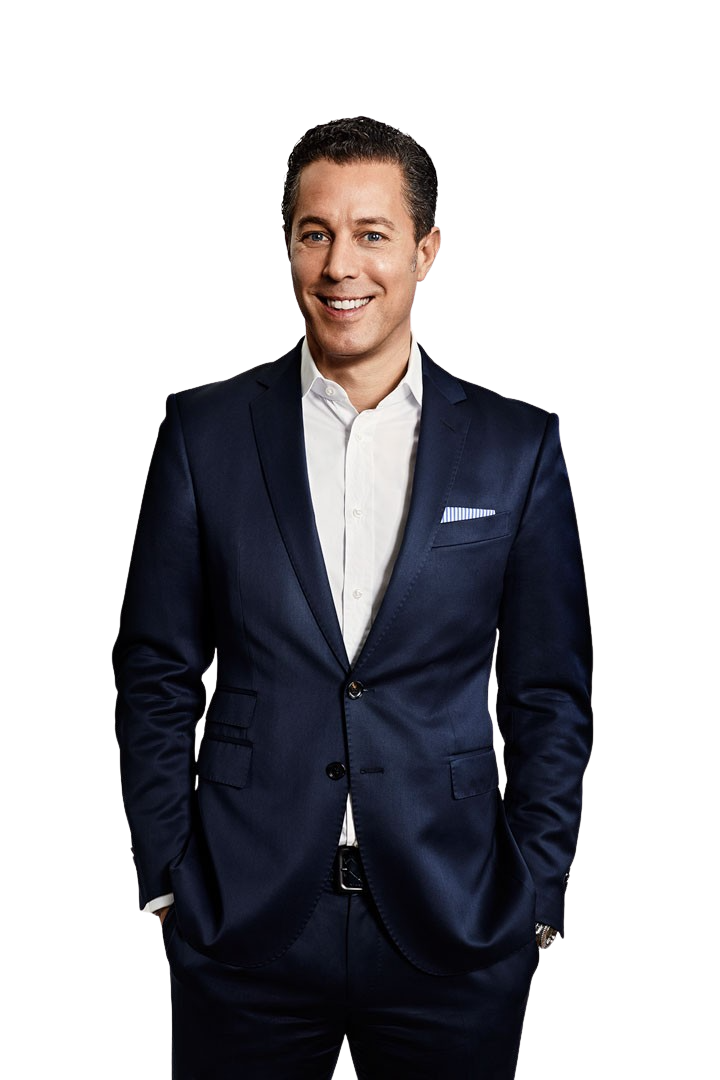
hina’s automotive market once again displayed great resilience in 2022, despite severe challenges.
In total, 23.6 million passenger cars were sold, a year-on-year increase of 9.5 percent. This included the record-breaking figure of 6.5 million new energy vehicles (NEVs), a year-on-year rise of 94.3 percent, reinforcing China’s critical role in the worldwide shift to electric mobility.
Repeating their success in 2021, Chinese players proved the big winners in the NEV market, accounting for more than 80 percent of total NEV sales. Meanwhile, established foreign OEMs lagged behind. Even premium brands which in the past could depend on success in China struggled to cope with intensifying competition from domestic manufacturers as the transition to e-mobility accelerated.
The next international phase of this battle has now begun in earnest, with Chinese automotive companies taking on major global markets, focusing especially on western Europe. In 2022, China’s total vehicle exports reached another record high of 2.5 million passenger cars, a year-on-year increase of 56.7 percent.
Looking forward, market conditions in China will remain challenging for foreign OEMs, as more new Chinese players ramp up production and sales amid rapidly changing customer tastes and shifting government priorities. Nonetheless, there are still areas such as sustainability and the metaverse where foreign players can gain a competitive advantage, as we explain in this report.
During 2022, China’s economy continued to be affected by restrictive COVID-19 suppression measures while in October, the 20th National Congress of the Chinese Communist Party (CCP) set the country’s direction for the next five years. In addition, Chinese manufacturers, like their international peers, were severely affected by the global chip shortage and rising raw material prices. Against this background, China’s automotive industry experienced a turbulent twelve months.
Curious? Download the full insight now!

Dr. Jan Burgard
Dr. Jan Burgard (1973) is CEO of Berylls Group, an international group of companies providing professional services to the automotive industry.
His responsibilities include accelerating the transformation of luxury and premium OEMs, with a particular focus on digitalization, big data, connectivity and artificial intelligence. Dr. Jan Burgard is also responsible for the implementation of digital products at Berylls and is a proven expert for the Chinese market.
Dr. Jan Burgard started his career at the investment bank MAN GROUP in New York. He developed a passion for the automotive industry during stopovers at an American consultancy and as manager at a German premium manufacturer. In October 2011, he became a founding partner of Berylls Strategy Advisors. The top management consultancy was the origin of today’s Group and continues to be the professional nucleus of the Group.
After studying business administration and economics, he earned his doctorate with a thesis on virtual product development in the automotive industry.
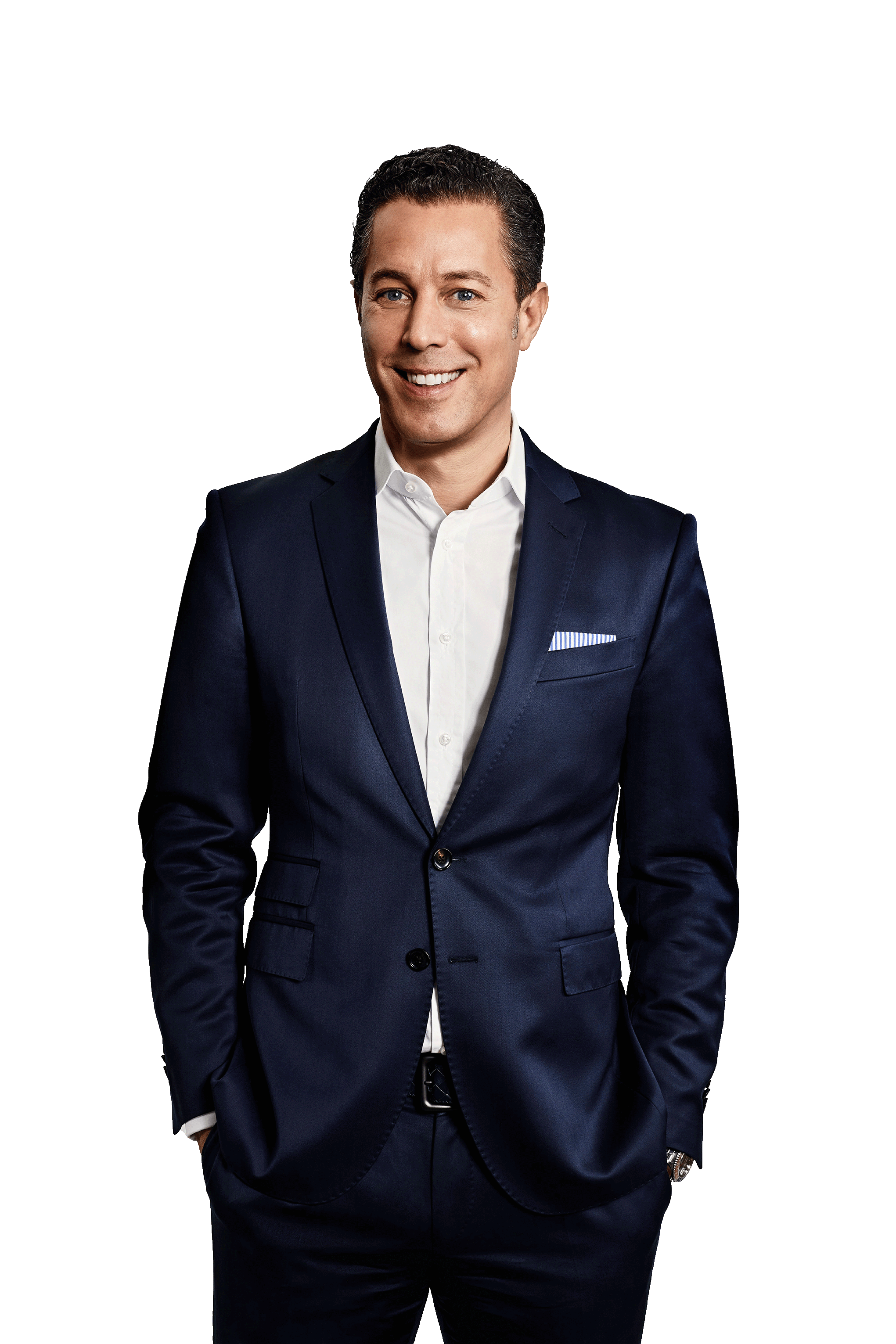
Willy Wang
Willy Lu Wang (1981) joined Berylls Strategy Advisors in 2017. He started his career participating in the graduate program of Audi focusing on production planning. After stations at another strategy consultancy as well as being the strategy director for a German Tier-1 supplier, he is now responsible for the China business at Berylls.
He has a broad consulting focus working for all clients in China, whether they are JVs, WOFEs or pure local players. He is also responsible for the development of AI and Big Data products dedicated towards the Chinese market further strengthening the Berylls End-to-End strategy and product development capabilities.
Wang studied Electronics & Information Technology with focus on Systems and Software Engineering and Control Theory at Karlsruhe Institute of Technology.
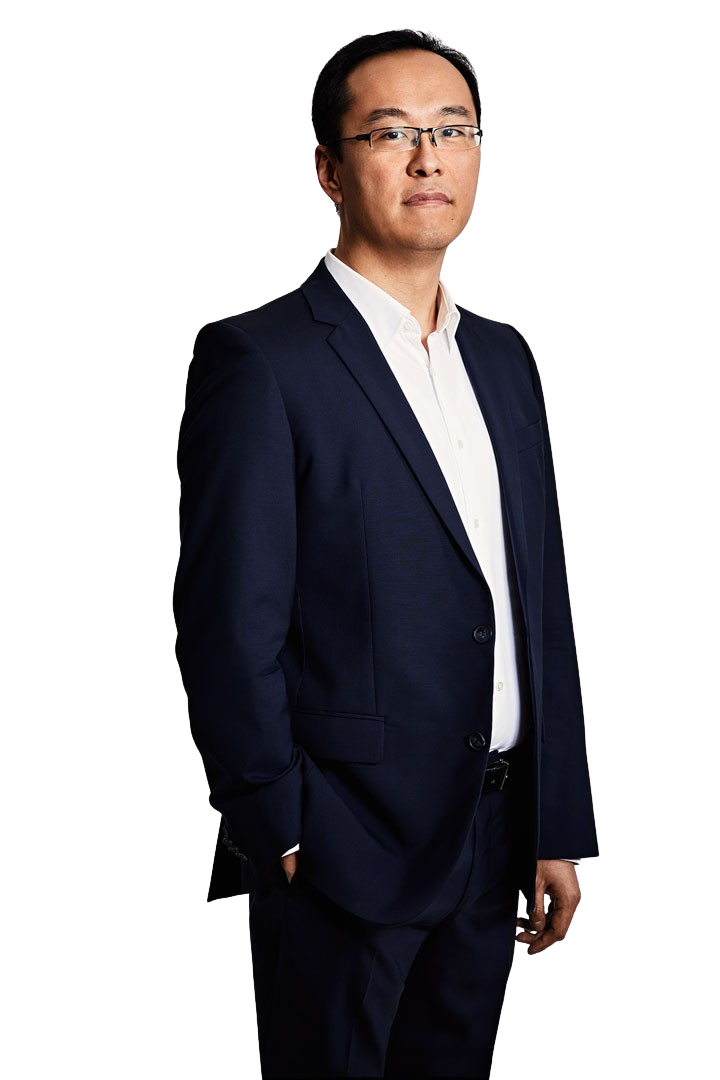
Hongtao Wei
Hongtao Wei (1988), Associate Partner, joined Berylls Strategy Advisors in 2015, an international strategy consultancy specializing in the automotive industry, where he focuses on all issues related to the Chinese automotive market. In addition to Western manufacturers in China, his clients also include Chinese OEMs, investors, provincial governments, and state-owned enterprises.
He has profound expert knowledge in the areas of sales and aftersales. His other areas of expertise include digitalization, connectivity, and turnaround management.
He studied Sinology, Economics and Statistics at the Ludwig-Maximilians-Universität in Munich.
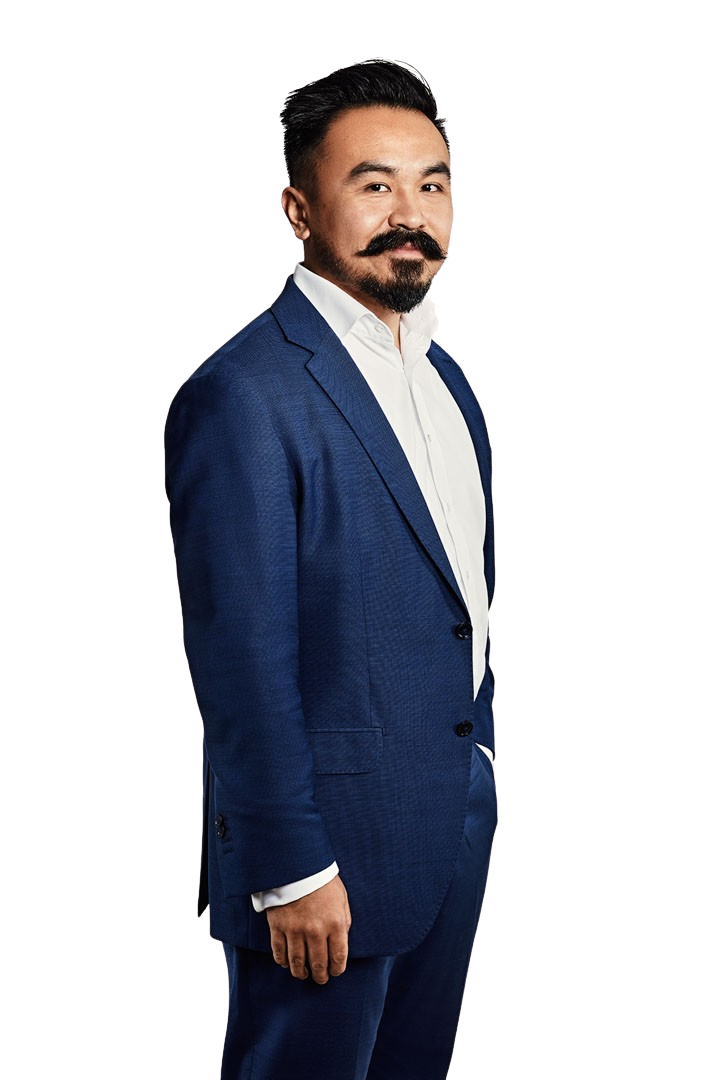
Soleiman Mansouri
Soleiman joined the Berylls Group in March 2022. He has set his focus on customer-centrist solutions, gaining experience in Product- and Corporate Strategy, Consulting with the focus on the OEM business. His Automotive career started with digitalization of the Aftersales of an US OEM in Europe and took him to China to the leading German OEM group, heading the Product and Portfolio department. He gained intensive consulting experience with one of the top management consulting firms and as a freelance consultant. Before joining Berylls, he was the Director Go-to-Market of one of the top Chinese OEMs supporting their entrance into the EU market. Soleiman is a graduated M.A./MBA in International Business from the University of Hamburg and ECUST/Shanghai.
Soleiman joined the Berylls Group in March 2022 and is part of the Asia-team, responsible for supporting all players in a successful market entrance. Also, provides profound expertise of customer-centric Product Marketing and Portfolio Strategy approaches to our clients.
Soleiman is expert in customer-centric Product-/Portfolio Strategy, Go-To-Market, Corporate Strategy and Entrepreneurship.

he Viable System Model (VSM) can help automotive companies steer a path to sustainable profitability while managing their increasing organizational complexity
75 percent of companies are unable to grow profitably over the long term., according to Sebastian Raisch, Gilbert Probst and Peter Gomez, authors of Wege zum Wachstum. One of the main reasons for this, is called the “growth paradox”, which describes companies chasing growth in a way that creates complexity, which actually inhibits growth.
Many executives say that it is not the complexity of external market conditions that causes them problems but the control of complexity within their own organization. Internal processes and administrative structures build up as the company grows, making it difficult for executives to maintain direct contact with their business and customers. As a result, they lose the essential focus on developing the potential for success.
This is where the Viable System Model (VSM) developed by the cybernetician Stafford Beer can help organizations make their complexity controllable and embed the important principle of self-organization.
The goal of many reorganizations is to “manage” corporate complexity. However, Berylls’ research and feedback from our clients suggests that most such exercises in the automotive industry only achieve limited success. Martin Pfiffner, author of The Neurology of Business: Implementing the Viable System Model, has identified the following cardinal errors that mean reorganizations often fail to have the desired impact:
The VSM offers executives a framework for avoiding these errors and shows how they can solve the problems created by complexity. Its primary focus is not to define structures such as divisions and departments within a successful organization, but to define the relationships between them.
A fundamental principle of the VSM is that the operational units of a company must be organized as viable systems according to the same model. This principle, called “recursivity”, enables problem-solving strategies for dealing with complexity and creating order out of chaos across the organization.
Box: How the Viable System Model was created

Why VSM is especially relevant to automotive companies
Many major OEMs and suppliers are undertaking or considering hugely ambitious reorganization programs to keep pace with the industry’s accelerating transformation. The VSM, correctly applied, is a critical approach for managing these organizations’ increasing complexity while maintaining growth and staying ahead of competitors.
To manage the increasing complexity within automotive organizations, the VSM provides five key control functions:
Figure 1: Viable System Model in an automotive company
Source: Berylls Strategy Advisors, following Pfiffner (2020) - Die dritte Dimension der Organisierens
Berylls’ research and our work with clients globally confirm that the VSM has repeatedly delivered rapid, effective solutions. Here are our key insights about how the VSM can be applied to achieve the only success that counts – satisfying customers to generate sustainable, long-term profitability:
Putting the customer first
It is crucial to design the organization’s dominant control dimension correctly to ensure that the business is structured in such a way that it focuses on the customer’s purchasing criteria and can implement the defined strategy effectively. Potential control dimensions include products, technologies, customer groups, applications, or regions.
Examples:
Premium OEMs: Cars, Vans, Service & Parts, Digital Services, Financial Services
Automotive Software Suppliers: Car Operating System, Omni Channel Commerce, After Sales, Production Automation, Enabler Technologies
Determining how far to decentralize:
Within operating business units, it is important to ensure that managers are responsible for the competencies and resources that determine success (System 1, see Figure 1). This autonomy should cover all functions that have a direct influence on the criteria that determine purchasing, such as product development.
At the same time, responsibility for organization-wide functions such as IT cannot be delegated, while central management may need to maintain control of plants or production capacities shared by operating units to achieve synergies between them (System 2).
The right degree of centralization can be calculated by asking the following questions:
Firstly, can we afford decentralization?
If the answer is yes, will decentralizing a task influence one or more key customer purchasing criteria?
If the answer is no, can a synergy be achieved by continuing to centralize the task?
If the answer is again no, the task should be assigned to the relevant unit because of the principle of subsidiarity.
Flattening further than conventional wisdom suggests
“How many direct reports can be managed?” is the wrong question. In our experience the traditional rule that there should be a maximum of seven “direct reports” fails in most cases. The correct approach is to look at horizontal and vertical complexity and consider how much autonomy operational units need to perform at their best and whether they need more or less support from senior management (horizontal complexity). In addition, reorganization programs should address whether senior management has sufficient scope for intervention to limit the autonomy of operating units in the interests of the whole company (vertical complexity).
At one automotive supplier, a VSM diagnosis showed that the organization could be flattened from five to four management levels by dissolving three business units and converting ten new product units into fully-fledged operational units. This flattening was possible because the product divisions were different and to a large extent able to manage their complexity independently. Furthermore, senior management had significant vertical complexity control to ensure overall optimization of the product areas (System 3).
Navigating into the unknown
In the automotive industry, navigating a rapidly changing environment must also be organized, with senior management taking the lead (System 4). Senior executives and senior operation leader (System 4 and 3) must balance what is right for today’s business with what is important for the future, while identifying external opportunities and threats. The last function to be designed is normative management (System 5) which defines the business mission and formulates governance policies which establish the guard rails within which strategic and operational management can function. This interplay of operational, strategic and normative management is of utmost importance to a successful transformation.
The timely redirection of human and financial capital from the old to the new business is both the most difficult and important task currently confronting the automotive industry. Figure 2 shows this interplay and the shift from the lower S-curve to the upper S-curve. However, too many senior automotive managers lack sufficient time to devote to strategic questions such as how much to invest in electromobility, connectivity or ADAS development because they are mired in operational issues which absorb most of their attention.
Figure 2: Adaptability – When do we change course?
Source: Malik, Berylls Strategy Advisors
By applying the VSM, an increasing number of OEMs and suppliers have executed successful organizational transformations that free up management time while delivering the critical interplay of operational, strategic and normative management. In plain terms, they are at least one step ahead of their competitors in seizing the opportunities created by this period of industry transition and transformation.
Dr. Christopher Brüggemann
Dr. Christopher Brüggemann (1983) is a Project Manager with focus on transforming organizations to improve performance, speed and agility. He is also an expert in strategy deployment, organizational design, and transformational change. Christopher has advised numerous companies through multiyear organizational transformations, often focused on operating model development and putting new ways of working, structures, processes, decision making mechanism in place.
Before joining Berylls, Christopher worked at Sixt SE, several other consultancies, and served as a research associate in cooperation with Deutsche Telekom. He has a PhD in economics and a diploma degree in business administration of Bayreuth University.
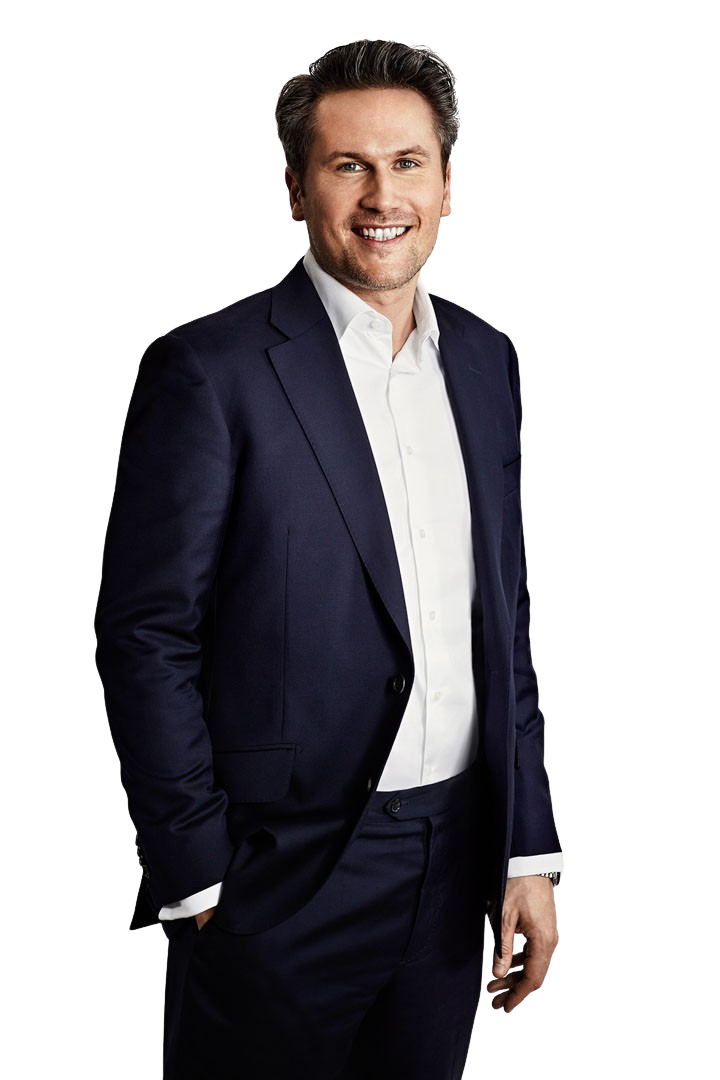
Peter Eltze
Peter Eltze (1964) joined Berylls by AlixPartners (formerly Berylls Strategy Advisors) as a Partner in November 2015. He began his career in the medical technology division of an integrated technology corporation, and became a project manager at Malik Management Zentrum St. Gallen in 1996 before being appointed Partner in 2001. From 2003, in his role as member of the executive board, he was in charge of Management Education & Development. Since the end of the 1990s, Peter Eltze has advised companies in the automotive and mechanical engineering industries. At Berylls, his consulting activities focus on integrated organizational development (strategy, structure, culture), transformation management, and executive development.
Education in wholesale and international trade; administrative sciences at the University of Constance, Germany.

Laura Kronen
Laura Kronen (1980) is a partner at Berylls by AlixPartners (formerly Berylls Strategy Advisors) with a focus on transformation. She is passionate about moving people and organizations forward. With over 18 years of industry and consulting experience, her focus is on transformative challenges in the operations context – from executives to individual employees, at manufacturers and suppliers. She helps her clients align strategy, structure, and culture in their respective market environments to build resilience.
Prior to joining Berylls, Laura Kronen worked at PwC Strategy&, Volkswagen AG and Audi. She holds a diploma degree in industrial engineering from the Karlsruhe Institute of Technology (KIT).

Dr. Martin Pfiffner
Dr. Martin Pfiffner (1965) works at Oroborus Fondation. Martin is one of the world’s leading experts on the practical implementation of the Viable System Model and Syntegration. Over the last thirty years, he has advised numerous economic, public, and private entities across the world, helping them get back on track and achieve success. His work centers on “The third dimension of organization,” which he defines as the neurology of an organization. His most recent book is The Neurology of Business: Implementing the Viable System Model (2022)
Martin studied economics at the University of St. Gallen (HSG) and earned his doctorate. At the time, he served as an assistant to professors Peter Gross (sociology, multi-option society) and Fredmund Malik (systems-oriented management theory). Later he studied in Canada and in Wales with Professor Stafford Beer, the pioneer of management-cybernetics.

ine erfolgreiche Transformation ist nur möglich, wenn die Führungskräfte die entsprechenden Qualitäten mitbringen.
Der Begriff der Transformation ist allgegenwärtig und auch in der Automobilindustrie nicht mehr wegzudenken. Es geht darum, dass das Unternehmen sich umorientiert. Dass das Unternehmen Dinge neu erlernen -sowie eingeschlagene Pfade verlassen muss.
Wenn wir von der Transformation sprechen, müssen wir auch über die Transformation der Führungskräfte sprechen.
Jetzt Podcast anhören:
Quelle: Börse hören.
https://www.brn-ag.de/41564
Laura Kronen
Laura Kronen (1980) ist Partner bei Berylls by AlixPartners (ehemals Berylls Strategy Advisors) mit Schwerpunkt Transformation. Menschen zu bewegen und Organisationen voranzubringen begeistert sie. Mit über 18 Jahren Industrie- und Beratungserfahrung liegt ihr Fokus auf transformativen Fragestellungen im Operations Umfeld – vom Executive bis zum einzelnen Mitarbeiter, bei Herstellern und Zulieferern. Sie unterstützt ihre Kunden dabei, Strategie, Struktur und Kultur in ihrem jeweiligen Marktumfeld in Einklang zu bringen und somit ihre Resilienz zu stärken.
Bevor Laura Kronen zu Berylls kam, arbeitete sie bei PwC Strategy&, Volkswagen AG und Audi. Sie hat einen Diplomabschluss in Wirtschaftsingenieurwesen vom Karlsruher Institut für Technologie (KIT).

Peter Eltze
Peter Eltze (1964) ist seit November 2015 als Partner bei Berylls by AlixPartners (ehemals Berylls Strategy Advisors) tätig, einer internationalen und auf die Automobilitätsindustrie spezialisierten Strategieberatung. Er ist Experte für ganzheitliche Transformationsprozesse und kann auf eine langjährige Erfahrung im Vertriebs- / Marketing- und Operations-Umfeld zurückschauen.
Peter Eltze berät seit 1994 Automobilhersteller und -zulieferer im globalen Kontext. Er verfügt über ein fundiertes Expertenwissen in den Bereichen Strategie- und Organisationsentwicklung. Zu seinen weiteren fachlichen Schwerpunkten zählen unter anderem Top Executive Coaching und der Themenkomplex rund um die Gestaltung von Führungsstrukturen und -konzepten.
Vor seinem Einstieg bei Berylls Strategy Advisors war er für MP und Malik als Mitglied der Geschäftsführung.
Im Anschluss an seine kaufmännische Ausbildung bei Siemens studierte er Verwaltungswissenschaften mit dem Schwerpunkt Managementlehre an der Uni Konstanz.

o you want to know what excites us most about transformation? Get to know the members of our team to find out!
Associate Partner
After graduation, I started as an executive assistant and was immediately appointed to the core team of a company-wide business reengineering program. From then on, the topic of transformation has been at the center of my work. Both in my next job as a member of the management team in a medium-sized company and then later as a consultant, the support of strategically-induced major change processes was always the focus.
In St. Gallen, I learned the systemic approach and the foundational interplay of strategy, structure, culture, and leadership, which is still part of my methodology for transformation projects at Berylls.
It always excites me to realign or revitalize organizations and help them elevate to a higher level of performance. The greatest thing for me is when we succeed in inspiring executives and employees along this journey, so that they can support the transformation and further develop themselves throughout the process. Only then will the changes we have initiated be put into practice and bear fruit. It is also a pleasure to support companies in this transformational process over a longer period while building lasting relationships.
Ultimately, a transformation is like an open-heart surgery, often exhausting because of its dynamic and complex nature, but at the same time it is very fulfilling when success becomes visible and sustainable.
I regularly work for automotive OEMs and suppliers. For larger transformation projects, my clients are typically from the C-suite level or are their direct reports. For management system topics, I usually work closely with subject matter experts and change agents.
Project Manager
Originally via strategy work. We always discuss a holistic approach with our clients, and the best strategy only helps if it can also be implemented. My first transformation client had expressed their wish for our implementation support to bring our strategy to life. From then on, I didn’t want to just drop the pen after strategy development.
It’s also very nice to actually be able to see the results of one’s work!
I’m excited about linking strategy and implementation. The best strategy can only be implemented if it is supported by the employees and if the organization is adapted in such a way that enables employees to impact change. At the end of the day, it’s always the people that matter.
So far, I’ve worked with premium OEMs where I have focused on sales, marketing, and HR. I work with both middle and senior management levels.
Associate Partner
I was first thrown into the deep end during my second consulting project, but then quickly discovered my passion. In terms of methodology, it fits perfectly with my focus on software-defined vehicles, where there is a huge need for transformation. This allows me to advise my customers not only on content, but also directly on the transformation process.
I see two factors there: firstly, I enjoy working with people to help them grow and succeed – this makes our work more tangible than pure strategy concepts.
Secondly, the measurable impact that the transformation work has enables me and my clients to assess how things have improved after only a few months! Our concepts go directly into implementation and don’t disappear into a drawer.
My focus is on OEMs, mostly within central organizational development. My contacts range from mid-level-management to C-suite level. My smallest transformation project involved 100 FTEs while my largest involved 20,000 FTEs.
Senior Consultant
As a psychologist, I have a natural interest in change and transformation. But I quickly realized that pure methodological knowledge alone is not enough. Strong content know-how is also required to have a real impact. That’s why I combine strategy and transformation consulting.
That it goes beyond pure strategy work. Good strategy work is still essential, but transformation also gives me the opportunity to implement these strategies and achieve tangible results.
Another relevant aspect for me is the fact that there is organizational development in every transformation. Ultimately, we are changing the environment in which thousands of people work every day – it is impressive to see how transformations can change this for the better.
My projects are close to top management, as they are usually game-changer projects for my clients. The size of the transformation project team varies. The largest one was staffed with almost 1000 employees from our client and other consulting companies.
Theresa Stütz
Theresa Stütz (1991) joined Berylls Strategy Advisors in December 2017. Meanwhile she is associate partner and automotive downstream expert.
She has been advising automotive manufacturers in a global context both in the luxury and premium segment. She has in-depth expert knowledge in the areas of sales and marketing, particularly in the context of customer experience strategies. Other areas of expertise include strategy development processes, Go-to-market strategies and transformation management.
Theresa received both Bachelor and Master of Science in Management and Technology (Mechanical Engineering) at Technical University of Munich.
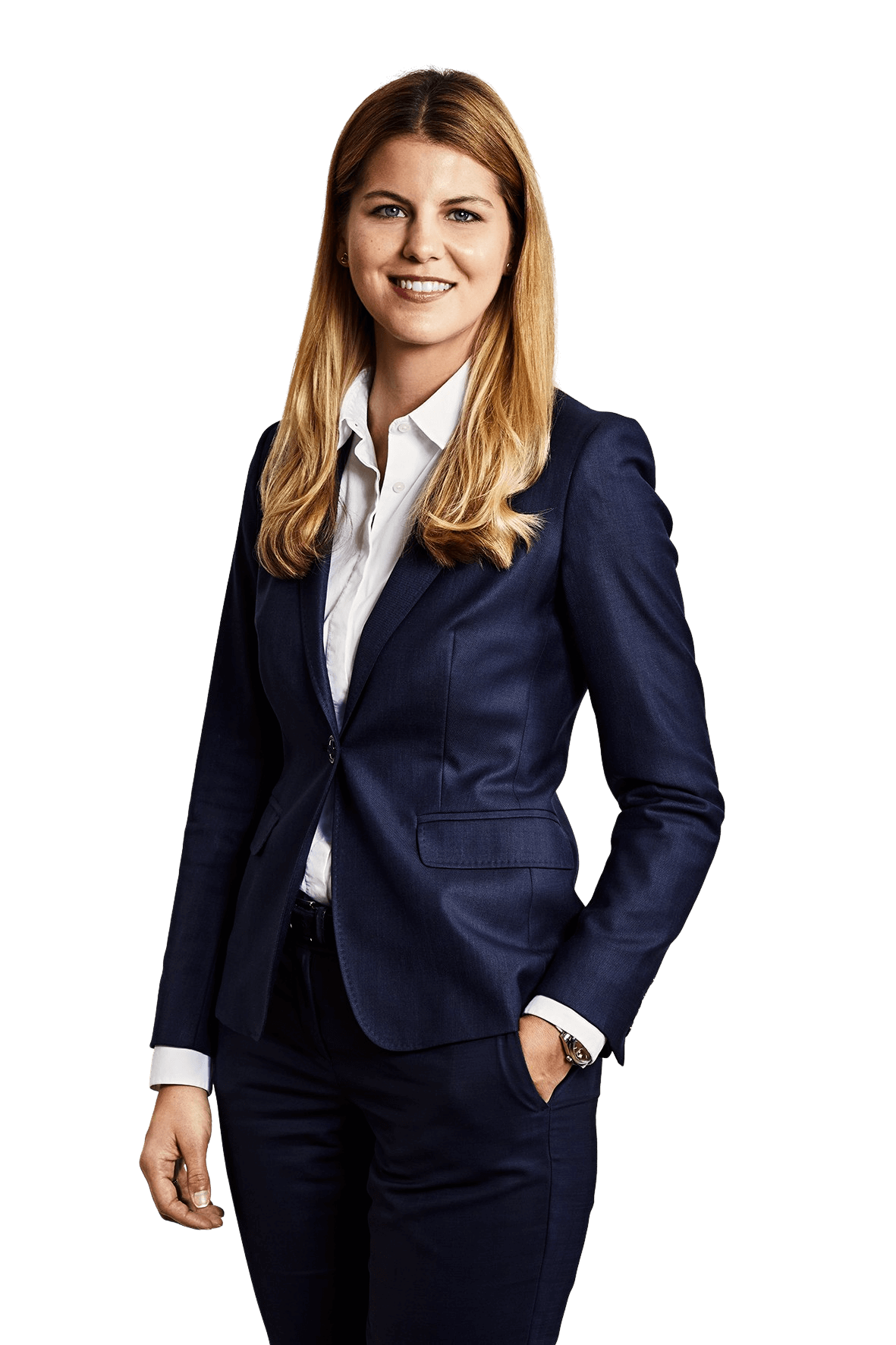
Dr. Frank Heines
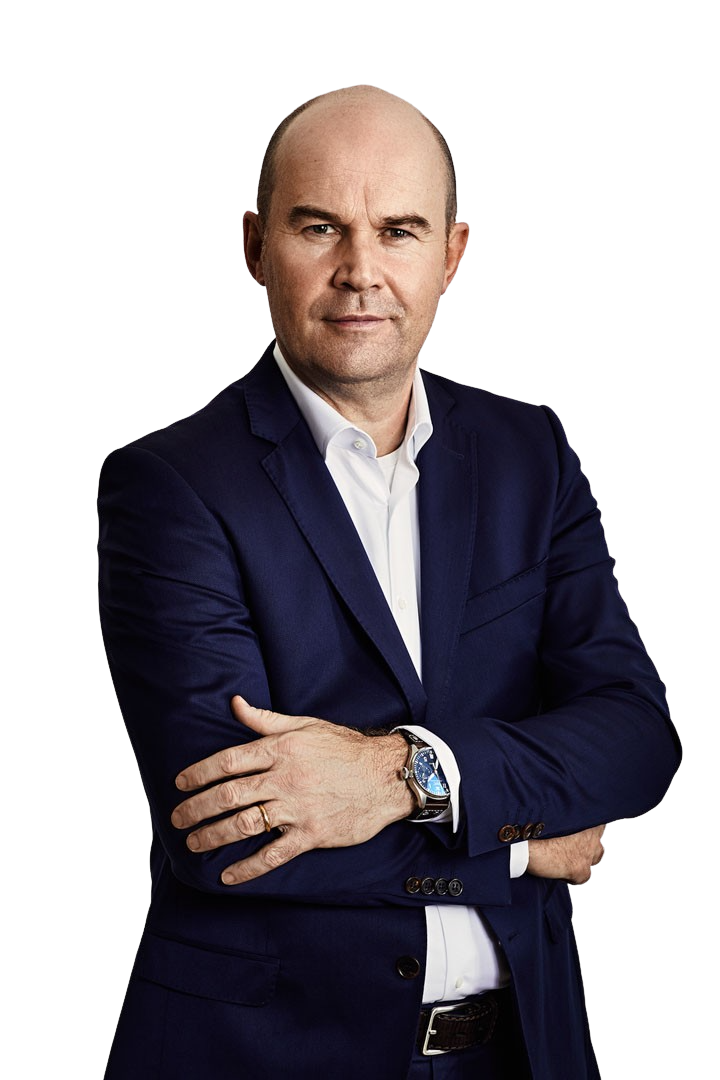
Sebastian Böswald
Sebastian Böswald (1991) joined Berylls by AlixPartners (formerly Berylls Strategy Advisors) in April 2021. He is an Associate Partner and an expert in both transformation and operations. Over the last decade, he has focused his work on strategy and organizational design, as well as on two megatrends shaping the automotive industry: software-defined vehicles and CASE (connected, autonomous, shared, and electrified mobility). In these fields, he has advised our global OEM clients as well as Tier-1 suppliers and tech companies.
Prior to joining Berylls, he worked for PwC Strategy& and started his career at BMW as a project manager for product strategy and digital charging services.
He received a Bachelor of Science in Automotive Computer Science at the Technical University of Ingolstadt as well as a Master of Science in Management from the Technical University of Munich.
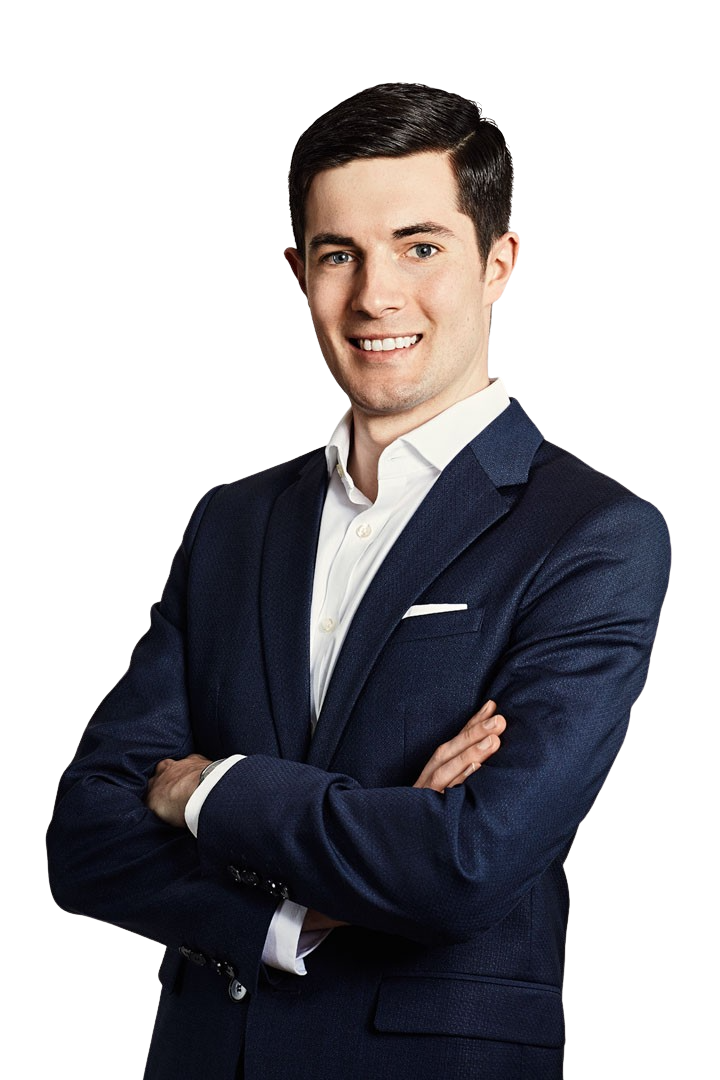
n der Automobilzuliefer-Branche häufen sich bereits seit einiger Zeit die Krisenfälle.
Aber mit dem richtigen Konzept für die Zukunft kann es wieder nach oben gehen. Die Berylls Group GmbH mit Hauptsitz in München hat über ihren Beteiligungsarm Berylls Equity Partners den insolventen Automobilzulieferer Huhn übernommen – unterstützt durch eine Fremdkapitallösung von Creditshelf.
Von Alexander Görbing
Vor zwei Jahren kam die schlechte Nachricht, die Heinrich Huhn-Gruppe musste Insolvenz anmelden. Im Verlauf des Insolvenzverfahrens konnte mit der Berylls Group GmbH ein strategischer Investor gefunden werden, der über eine umfangreiche Erfahrung in der Mobilitäts- und Zuliefererbranche verfügt. Im Rahmen eines Insolvenzverfahrens müssen alle Beteiligten eng zusammenarbeiten – und das unter hohem Zeitdruck. Wenn hier die Zahnräder nicht reibungslos ineinandergreifen, dann kann die geplante Unternehmensrettung auch noch an Kleinigkeiten scheitern. Wie das Zusammenspiel der einzelnen Parteien idealerweise, funktioniert, zeigte sich dagegen beim Automobilzulieferer Huhn aus Drolshagen in der Nähe von Siegen in Nordrhein-Westfalen.
„Es ist immer sehr wichtig, dass alle Player im Prozess sehr gut informiert sind, dass es einen Zeitplan gibt und dass dieser dann auch eingehalten wird. In einem Insolvenzverfahren bauen viele Entscheidungen aufeinander auf und es gilt Fristen einzuhalten, um zu vermeiden, dass zeitkritische Folgeprobleme entstehen können“, erklärt Stefan Hnida, Leiter Partnermanagement bei der Creditshelf AG. Seit mehr als zwei Jahren setzen sich Teams bei Creditshelf auch mit Finanzierungen im Bereich von Distressed M&A auseinander. Bislang gab es schon ein gutes Dutzend Fälle, die mit Fremdkapitallösungen ermöglicht wurden. „Ermöglichen ist genau das richtige Stichwort, denn wir verstehen uns bei diesen Transaktionen als eine Art ´Deal-Enabler´ für einen strukturierten Verkauf“, fährt Hnida fort. Angesichts der Vielzahl an Herausforderungen weltweit, rechnet er für die kommenden Monate mit mehr Geschäft in diesem Bereich. Das liege nicht nur an den Nachwirkungen der Corona-Pandemie und der aktuellen Kosten- und Lieferkettenkrise, sondern auch an der zunehmenden Zurückhaltung von klassischen Banken. „Wir agieren sicher etwas risikofreudiger als traditionelle Geldgeber – aber wir lassen uns das auch entsprechend bezahlen“, so Hnida weiter.

Im Fall der Heinrich Huhn-Gruppe ging das Team von Creditshelf ähnlich vor wie bei vergleichbaren Finanzierungsentscheidungen im Bereich Automotive. Ein Kriterium bei der Entscheidung ist unter anderem der Umfang der Wertschöpfungskette. Weiterhin werden auch die Marktchancen im Bereich der Elektromobilität überprüft, während die Lieferung von Komponenten für den konventionellen Antriebsstrang eher negativ bewertet wird. „Die Unternehmen, die wir uns ansehen, sind oftmals im Kern grundsolide und haben ein tragfähiges Geschäftsmodell. Trotzdem können sie durch unerwartete Entwicklungen in eine Liquiditätskrise geraten“, so Hnida. Insgesamt sei die gesamte Branche sehr finanzierungsintensiv, durch hohe Aufwendungen im Bereich Investitionen, Lagerhaltung sowie Forschung und Entwicklung. Bei der Frage einer Finanzierungsbeteiligung sei es aber ebenso wichtig zu erfahren, welche Pläne der neue Investor mit dem Unternehmen hat und welche Wachstumsstory es geben soll.
Die Heinrich Huhn-Gruppe beschäftigt rund 500 Mitarbeiter an ihren Standorten in Drolshagen sowie bei der Tochtergesellschaft in Vráble (Slowakei). Das Unternehmen, das auf eine über 100jährige Geschichte zurückblicke kann, beliefert weltweit Abnehmer aus der Automobilbranche mit Metallumformteilen für Bremskraftverstärker, Lenksäulen, Getriebe, Lager sowie mit weiteren Baugruppen im Automobilbereich. 1912 gegründet, war die Heinrich Huhn Deutschland GmbH ein Familienunternehmen, das bis in die vierte Generation in der Hand der Gründerfamilie blieb. Die Herausforderungen für den Automobilzulieferer, wie die die Dieselkrise und die weltweite Corona-Pandemie, waren dann die Auslöser für eine existenzbedrohende finanzielle Schieflage. „Als wir auf die Huhn-Gruppe aufmerksam wurden, waren wir schnell der Ansicht, dass wir für die herausfordernde Situation des Unternehmens eine schnelle und effektive Lösung finden können. Das war für uns dann der Auslöser, um uns intensiver mit einer möglichen Übernahme zu beschäftigen“, erklärt Andreas Rauh, Geschäftsführer bei Berylls Equity Partners GmbH. Der sofort eingeleitete Transformationsprozess wurde dann allerdings im vergangenen Jahr durch die Halbleiterkrise empfindlich gestört. „Es hat sich im Nachhinein als sehr gut erwiesen, dass wir bei unserem Übernahmekonzept ein paar Sicherheitspolster vorgesehen haben“, fährt Rauh fort. Trotz aller Widrigkeiten befinde man sich auf einem guten Weg, denn – so fügt er an: „sicherheitsrelevante Teile in den Bereichen Lenkung und Fahrwerk im Auto werden immer gebraucht, selbstverständlich auch beim E-Auto“.
Die Berylls Group GmbH hat neben dem Hauptgeschäft der Top-Level-Management-Beratung in 2020 ihren Beteiligungsarm Berylls Equity Partners gegründet, um mit eigenem Kapital in kriselnde Unternehmen der Mobilitätsindustrie zu investieren. „Wir haben auf der Beraterseite so viele erfolgreiche Unternehmenstransaktionen begleitet, dass wir uns das auch selbst zugetraut haben“, sagt Rauh. Inzwischen gab es in jedem Jahr eine Übernahme und das Berylls-Team hält weiter die Augen offen. Durch die gute Vernetzung in der Automotive-Branche bekomme man frühzeitig Hinweise so wie schnelle Einschätzungen über die Krisenursachen und Marktchancen möglicher Übernahmekandidaten. „Wir wissen relativ schnell, ob es sich bei einem Unternehmen lohnt, tiefer in die Zahlen einzusteigen. Entscheidend ist für uns an erster Stelle immer unsere Einschätzung der Nachhaltigkeit des Geschäftsmodells. Nur wenn wir bei Berylls Equity Partners von ihr überzeugt sind, prüfen wir detaillierter, ob sich ein Investment lohnen kann“, erklärt Rauh weiter. Im Mittelpunkt steht immer, die Firmen im Berylls Portfolio langfristig erfolgreich zu entwickeln.
Bei der Heinrich Huhn-Gruppe läuft derzeit die Aufbau-Arbeit nach der überstandenen Insolvenz weiter. „Aktuell haben wir mit den Unsicherheiten durch die Entwicklung bei den Energiekosten zu kämpfen“, erklärt Jens Lange, seit 01. Juli 2022 Geschäftsführer der Heinrich Huhn Gruppe. Die hohen Tarifabschlüsse in der Metallbranche seien auch nicht hilfreich. Beide Faktoren – zusammen mit einem unverändert unsicheren Abrufverhalten der Hersteller – könnten nach seiner Ansicht besonders im Jahr 2023 zu weiteren Krisen in der Automotive-Branche führen. Bei der Heinrich-Huhn-Gruppe setzt man langfristig darauf, neue Geschäftsfelder zu erschließen. „Wir sehen Energiespeichersysteme, die in Zukunft verstärkt im Stromnetz eingesetzt werden, als eine Technologie mit viel Potenzial für die Zukunft. Da wollen wir ganz vorne mit dabei sein“, so Lange. Aktuell sei das Unternehmen noch „100 Prozent Automotive“ – aber man wolle sich beim Know-how breiter aufstellen. Geplant ist außerdem die Erschließung neuer Kundengruppen. Parallel sollen die Aktivitäten am zweiten Standort des Unternehmens in der Slowakei als auch außerhalb Europas auf- bzw. ausgebaut werden. Denn auch bei der Huhn Gruppe kann man sich einem generellen Trend in der Industrie nicht verschließen. Die aktuellen Bedingungen insbesondere bei den Energiekosten führen branchenweit zu einem Verlagerungsdruck.
Firmeninfo: Heinrich Huhn Gruppe
Branche: Automobilzulieferer
Gründung: 1912
Mitarbeitende: 500
Umsatz: ca. 100 Mio. EUR
Andreas Rauh
Andreas ist seit Januar 2020 als Mitgründer und Geschäftsführer bei Berylls Equity Partners tätig. Berylls Equity Partners investiert, als Beteiligungsgesellschaft der Berylls Gruppe, in Unternehmen der Mobilitätsindustrie, die sich in Sondersituationen befinden.
Andreas ist Experte in den Bereichen Private Equity, Mergers & Acquisitions und Unternehmensführung.
Nach zehn Jahren im Bereich Transaktionsberatung mit Schwerpunkt im Mittelstand wechselte Andreas im Jahr 2014 in den Beteiligungsbereich. Dort hat er seitdem in leitender Funktion eine zweistellige Anzahl an Firmenübernahmen und -verkäufen begleitet.
Andreas ist ausgebildeter Diplomkaufmann mit einem Abschluss von der Universität Trier und hält einen Master of Science in Business Abschluss der Handelshøyskolen BI.
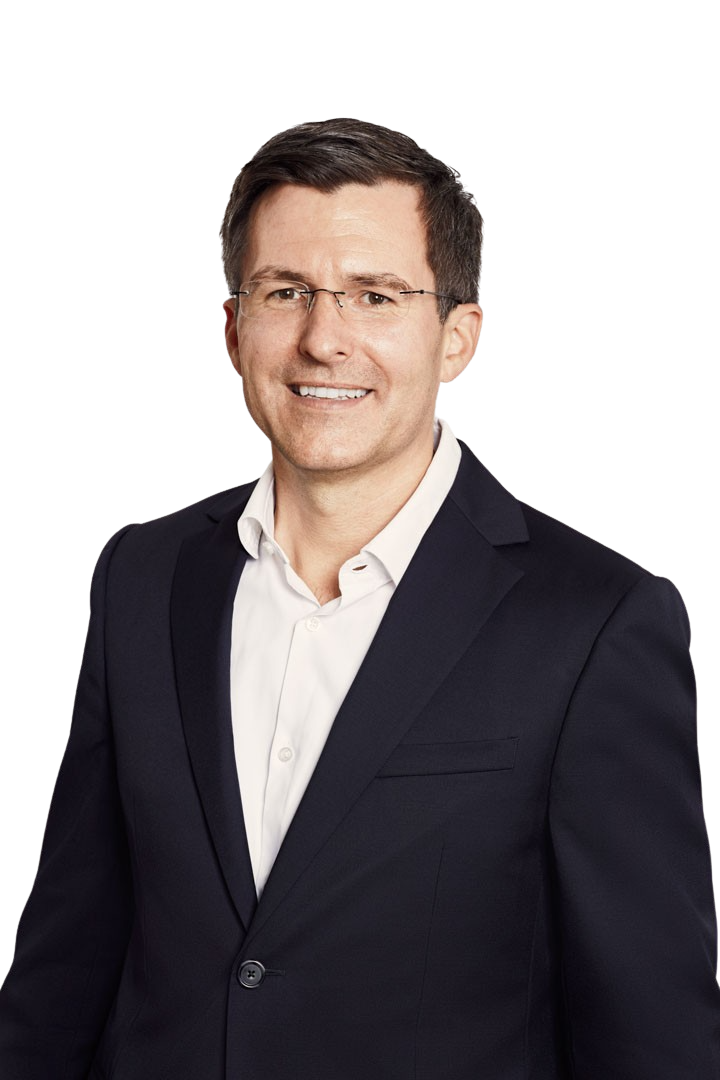
pskilling and reskilling staff is critical for automotive companies as the industry’s transformation accelerates. We identify the obstacles that undermine capability-building programs and how to overcome them.
The irresistible rise of connected, autonomous, shared, and electric (CASE) vehicles, combined with advancing digitization, is re-shaping the automotive industry – but in most auto companies, the knowledge and skills of the workforce are not yet keeping pace with the transformation. Consider these striking numbers drawn from our global automotive industry experience and engagement with clients:
Transformation in the Automobile industry is in full swing with capability building becoming a key bottleneck for success.
Source: Berylls, Malik
Disruption on the scale currently happening in the automotive industry dramatically reduces the half-life of existing knowledge and the value of established skills. Many companies also have ageing workforces, and the shortage of employees with the right skills will only add to this problem. In addition, new market entrants have brought fresh approaches to the industry, that in many cases have the potential to replace existing practices.
New expertise is therefore required, which sometimes nobody in a company currently possesses. And what is true for traditional skills is also true for new ones. They can become rapidly outmoded as the sheer pace of change across the industry turns the capability wheel faster and faster.
Companies cannot stand back and hope these challenges will resolve themselves over time. Instead, the solution is proactive capability building, which addresses how to develop new and existing knowledge and skills within the organization. A lack of action on this front amounts to what we call a capability-building “bottleneck”.
Most managers we consult agree with this perspective, yet very few have so far succeeded in overcoming a challenge of such vital strategic importance. We have identified the following key issues from our engagement with clients that cause or reinforce a capability-building bottleneck:
Several examples illustrate the scale of the capability gap facing the industry. Among suppliers, Bosch plans over the next five years to upskill and reskill up to 80,000 employees. Meanwhile, ZF Friedrichshafen’s Electrified Powertrain Technology division has successfully launched the largest capability-building initiative in the company’s history as part of its e-mobility transformation.
ZF Friedrichshafen AG – Capability building amid transformation
More than 12,700 managers and employees at ZF Friedrichshafen AG worldwide are learning, networking, and developing themselves, and their teams to master the transformation from combustion engine to e-mobility.
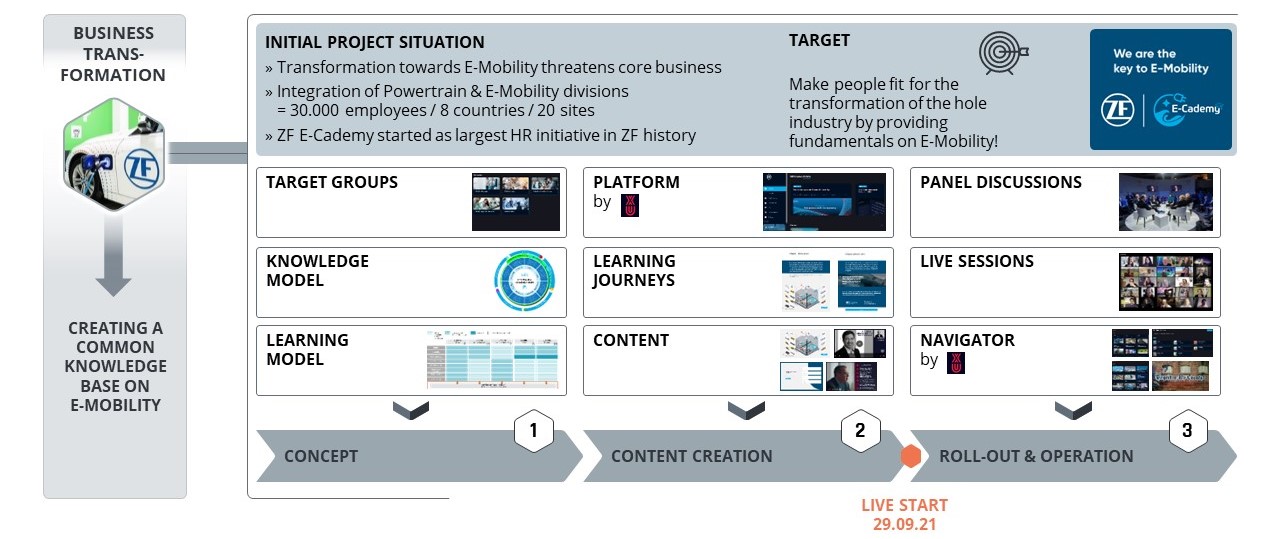
Source: Berylls
Over at Continental, the company wants to enable its transformation by offering training in Industry 4.0, new drive concepts and digitization at its Continental Institute of Technology and Transformation (CITT).
On the OEM side, software development is one of VW’s focus areas, with around 11,500 employees involved at its Wolfsburg plant. BMW has launched its largest-ever training initiative to deepen and expand the company’s expertise. Not to be outdone, Mercedes-Benz plans to invest more than €1.3bn in Germany alone in employee qualification and development by 2030.
It is a similar story beyond Germany. Stellantis recently announced an initiative to build up the next generation of automotive engineers. Ford has begun to raise overall business capability worldwide across key future and existing disciplines, and General Motors has declared that building a future-ready workforce is a key business priority to make its transformation a reality.
These types of capability-building initiatives by companies regularly exceed previous transformational upskilling and reskilling programs in their scope and scale. It is not just the large numbers of participants and the global ambition that increases complexity and makes these initiatives extraordinary. It is also the fact that they stretch across the whole organization from management to shopfloor.
Any capability-building initiative of this ambition is bound to fail if business divisions do not take the lead in ensuring success. Without their leadership, the initiative and ultimately the transformation will lack guidance, purpose, and role models. In addition, day-to-day business and project management decisions will not be aligned with the initiative’s goals.
Given the number of disruptive trends impacting the automotive industry, capability building is essentially about safeguarding functional strategies in areas such as management and value creation, thereby securing underlying core services in the long term. Proactive capability building addresses these issues before it becomes clear that existing capabilities cannot meet changing market conditions and customer demands.
Companies need to create a holistic, modular competency model that is regularly updated and incorporates both the strategic perspective of the business and the needs of employees. They should use hypothetical employee profiles that reveal behavioral patterns to meet the requirements of different target groups. The model should combine awareness, upskilling, and reskilling offers to fix basic problems or to bring employees up to the next level.
When it comes to scalability, flexibility, online and offline availability, effectiveness and efficiency, the advantages of digital learning in transformation and change situations outweigh the disadvantages of higher initial costs and longer preparation times before programs can be launched. Live online formats can be a significant part of blended learning and make highly personalized learning journeys possible. The service should also be supported by learning analytics and dashboards to advance overall progress toward the achievement of educational goals.
Transformation of this size can feel like bringing an elephant to a dance. So lastly, here are the key factors that can help secure the ultimate success of a capability-building initiative:
As we have noted, the types of knowledge and skills now required are new to most employees and the organization in general, apart from a few experts. Second-best capabilities will not help a business seize future opportunities and nor will they motivate employees or attract outside talent. It is far better to bring internal and external experts together to create a world-class content, teaching and learning experience.
Overwhelming workloads are a serious issue during business transformation projects. However, there is also the danger of falling into a trap where managers feel forced to decide whether capability building or current business targets are the top priority, and to ask who will benefit if employees are released for upskilling or reskilling programs. Both questions are wrong because over time, solving capability-building bottlenecks benefits the whole company.
From the outset, it is a mistake to underestimate the importance of ensuring the highest possible engagement rates, an active learning culture and the integration of capabilities and mindsets into daily workplace routines. This effort should start weeks before the initiative’s formal launch with sneak previews, teaser videos, testimonials, games, email communication, and large-scale kick-off events.
Companies should create learning journeys based on individual readiness checks followed by personal learning recommendations to engage participants and tailor learning to meet their needs. General personal development processes and capability building should be combined in a way that immediately supports participants in their daily business activities.
The whole program must be scalable, personalized, available online and offline, continuously extended over-the-air, and have maximum user acceptance, to enable the best possible individual and group learning experience. Enabling participants to use their own devices makes the task far easier to address.
Capability building is a matter of long-term viability for automotive companies. Many OEMs and suppliers in Germany, the rest of Europe and globally have started to address this fundamental challenge, demonstrating an increasing awareness of the urgent need to upskill or reskill their workforces to fill new job profiles. Yet the results of these initiatives are still extremely variable.
As we have noted, too many companies are burdened by inadequate capability pipelines, gaps in their knowledge, insufficient time allocated for upskilling and reskilling, and small-scale learning approaches. All these shortcomings lead to a capability-building bottleneck.
By following our recommendations, companies can largely avoid having to take a trial-and-error approach. Based on our engagement with clients, we believe that the chances of success are dramatically improved by working through the systematic approach we have set out in this paper.
Please contact us to find out more. We look forward to hearing from you.
Dr. Frank Heines

y 2030 170 Mio. people could live within proximity of a zero-emission zone (ZEZ) – affecting 80 Mio. Passenger cars on the road.
At least 36 cities pledged to establish a significant area of their city as a zero-emission zone by 2030. This will have a massive impact on new cars sold in and around these cities as well as the replacement of their current vehicle fleet.
Map of cities planning to introduce a zero-emission zone by 2030
Decarbonization of the vehicle fleet in line with the Paris Agreement is essential to fight climate change. To spur the decarbonization of the vehicle fleet, governments all over the world take measures for the conversion of fleets from internal combustion engines (ICE) vehicles to zero-emission vehicles at the tailpipe.
To phase out ICE vehicles many countries plan to ban the registration and sale of new ICE vehicles. The member states of the EU agreed to enforce this ban by 2035. Another measure taken by cities and local governments is the introduction of zero emission zones (ZEZ). This helps to spur the decarbonization of the vehicle fleet, improves local air quality and limits congestion. While there is no strict definition of ZEZs, generally only buses, trucks, and cars with zero tailpipe emissions as well as pedestrians and cyclists are allowed access. The restrictions for freight are not consistent between the different governments, however it is likely that the majority of ZEZs will also apply to freight, perhaps even more so. For example: at least 29 cities in the Netherlands announces to implement ZEZs for freight by 2025!
In addition to national or isolated initiatives to establish ZEZs, 36 cities around the world that are part of the C40 alliance have joined forces. The members of the C40 alliance have set themselves the goal of combating the climate crisis. 36 of these members have committed to creating ZEZs to reduce emissions in city centers. Among them are cities like London, Berlin, Mexico City and Tokyo (see map). In their “Green and Healthy Streets Declaration”, they pledge to establish a significant area of their city as a zero-emission zone by 2030. This means that by 2030 170 million people could live within proximity (within 25km) of ZEZ and thereby affect their future purchasing decisions. Currently, these 170 million people represent a vehicle fleet of about 80 million passenger cars; ZEZs will require accelerated replacement of this fleet. For comparison, IHS currently predicts that around 230 million electric vehicles will be produced between 2022 and 2030.
Besides commitment from European cities, it is remarkable that many cities in developing countries committed to ZEZ. Their ambitious targets signify the high relevance of the climate crisis and pollution of inner cities for these regions of the world. It is likely that some of these cities will delay or soften the implementation of a ZEZ, if more pressing political issues arise.
Furthermore, looking at the map, there is one apparent gap. China, responsible for around one third of worldwide vehicle sales, does not have any cities committing to ZEZs. However, multiple cities like Shenzhen and Luoyang in China, have or a planning to introduce ZEZs for freight vehicles. A change in policy in Chinese metropolitan areas could have a significant impact on the impact of ZEZs on global auto demand. If the current Chinese C40 cities were also committed to creating ZEZs, that would be over 90 million people.
However, the steering effect of cities committing to implementing ZEZs is significant even without Chinese involvement. However, only a few cities so far have made the commitment official, have set a start date, indicated the exact vehicle types affected, and have binding requirements for access based on things like emission performance standards. Examples that fulfill these four conditions currently exist primarily in Europe, which is a role model for ZEZs. It is likely that other nations will follow the European example. What is certain is that the final implementation and impact of ZEZs on car owners will depend on the adaptation of national and local laws.
Dr. Alexander Timmer
Dr. Alexander Timmer (1981) joined Berylls by AlixPartners (formerly Berylls Strategy Advisors), an international strategy consultancy specializing in the automotive industry, as a partner in May 2021. He is an expert in market entry and growth strategies, M&A and can look back on many years of experience in the operations environment. Dr. Alexander Timmer has been advising automotive manufacturers and suppliers in a global context since 2012. He has in-depth expert knowledge in the areas of portfolio planning, development and production. His other areas of expertise include digitalization and the complex of topics surrounding electromobility.
Prior to joining Berylls Strategy Advisors, he worked for Booz & Company and PwC Strategy&, among others, as a member of the management team in North America, Asia and Europe.
After studying mechanical engineering at RWTH Aachen University and Chalmers University in Gothenburg, he earned his doctorate in manufacturing technologies at the Machine Tool Laboratory of RWTH Aachen University.
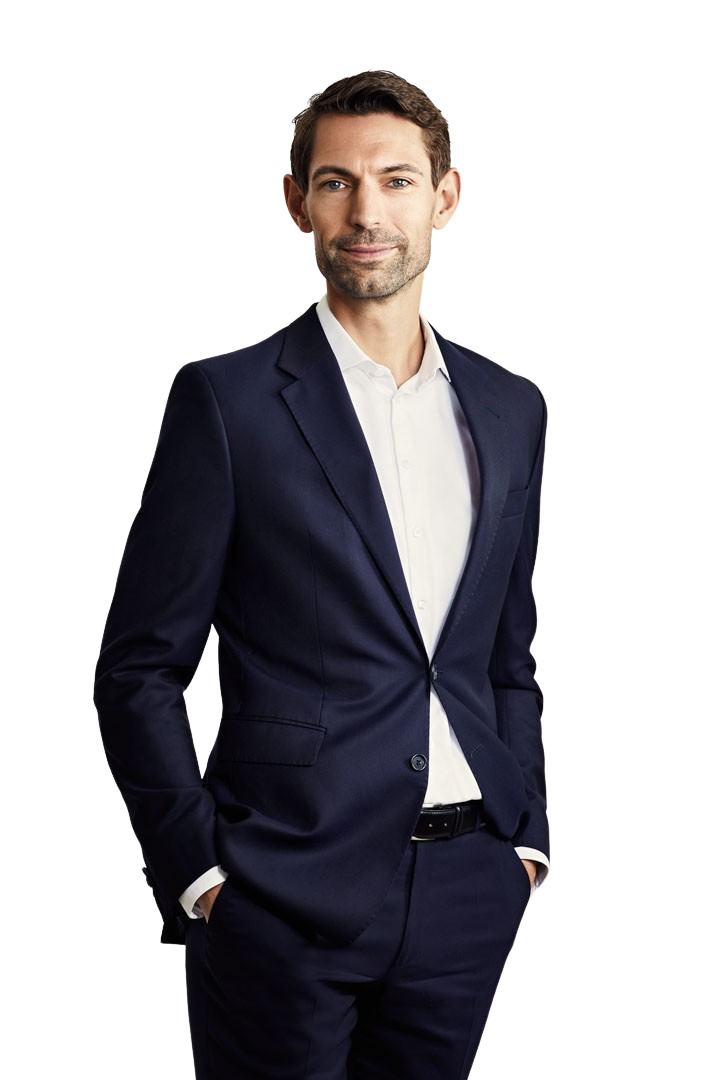
NO TIME TO READ THIS WEBSITE?